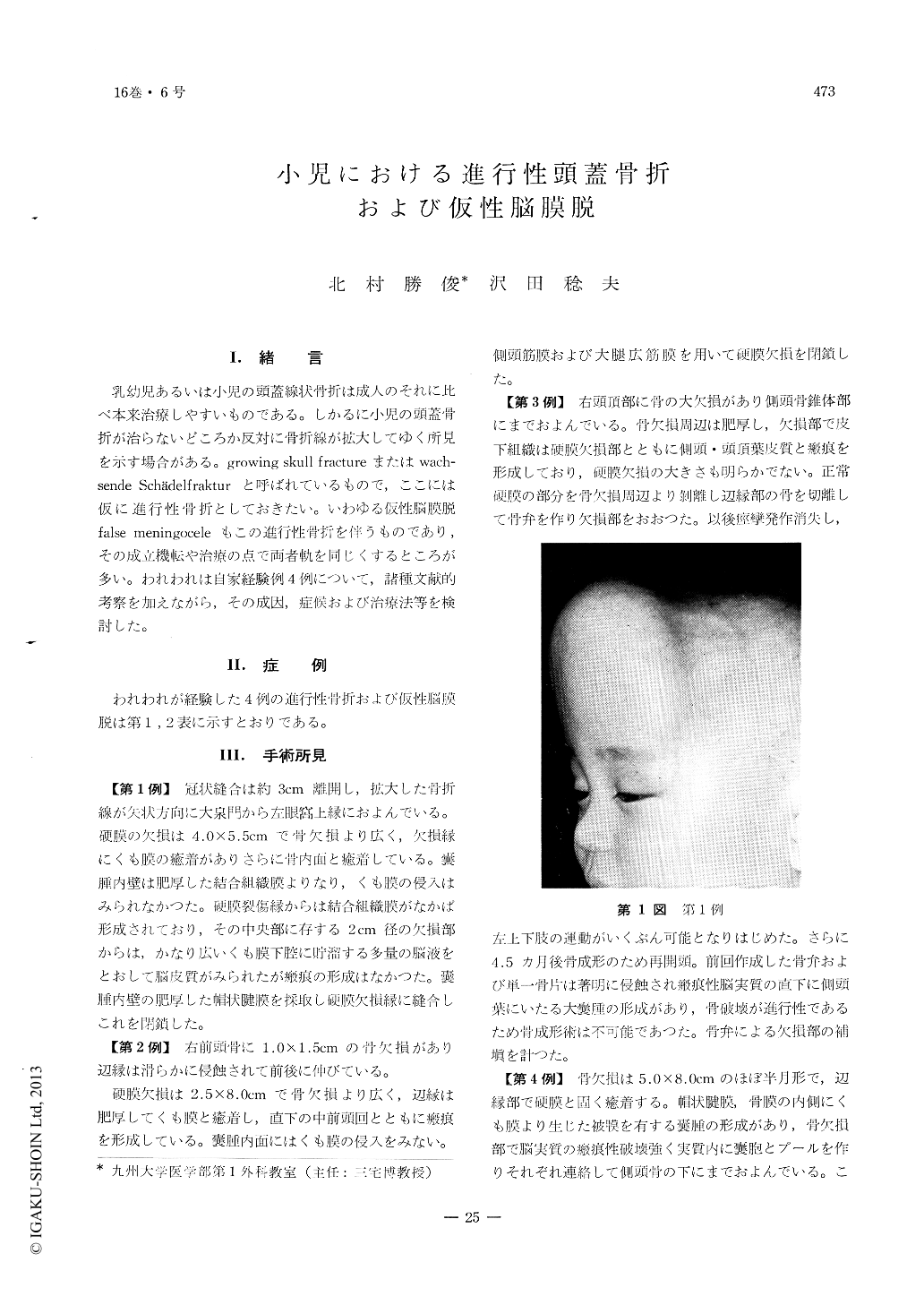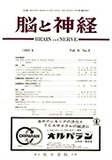Japanese
English
- 有料閲覧
- Abstract 文献概要
- 1ページ目 Look Inside
I.緒言
乳幼児あるいは小児の頭蓋線状骨折は成人のそれに比べ本来治療しやすいものである。しかるに小児の頭蓋骨折が治らないどころか反対に骨折線が拡大してゆく所見を示す場合がある。growing skull fractureまたはwach—sende Schäadelfrakturと呼ばれているもので,ここには仮に進行性骨折としておきたい。いわゆる仮性脳膜脱false meningoceleもこの進行性骨折を伴うものであり,その成立機転や治療の点で両者軌を同じくするところが多い。われわれは自家経験例4例について,諸種文献的考察を加えながら,その成因,症候および治療法等を検討した。
Four cases of growing skull fracture, associated with false meningocele in one case, have been encountered since 1959. Head trauma took place below one year of age in all cases, Head deformity appeared from the 4th to 35th posttraumatic day. Bone defect accompanied extensive dural defect in all cases. It is thus presumed that the greatest causative factor of the progressive bone erosion should be the defect of the dura which is a firm membrane proteting the overlying skull against the continuously pulsating pressure of the brain, although chronic increased intracranial pressure after head trauma may also contribute in some cases. From the operative findings the authors classified the growing skull fracture in three types: 1) false meninggocele with a large cyst lined with proliferating arachnoid mem-brane, 2) growing skull fracture associated with fluid accumulation in the subperiosteal space and 3) growing fracture accompanying protrusion of scarring meningocerebral tissue. High incidence of the dural laceration under the skull fracture in infancy should be due to the anatomical relationship that the dura is still firmly attached to the inner surface of the internal table of the skull. This is most evident in the vicinity of the fontanel, where large pools of subarachnoid space are frequently present and tend to develop permanent fluid leakage when ruptured.
Growing skull fracture may develop into a con-siderable skull deformity accompanying secondary damages of the brain, and its treatment should be done in early stage. Dural plasty is essential for its treatment.

Copyright © 1964, Igaku-Shoin Ltd. All rights reserved.


